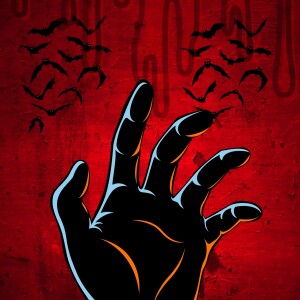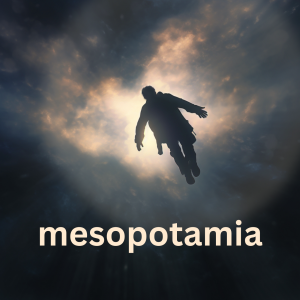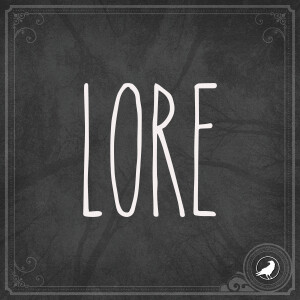

Read Beat (...and repeat)
https://feeds.buzzsprout.com/1950812.rssEpisode List

"What's Up With Women and Money?" by Alison Kosik
Before Alison Kosik wrote What's Up With Women and Money?: How To Do All the Financial Stuff You’ve Been Avoiding she’d been a business correspondent for CNN, often filing stories from the floor of the New York Stock Exchange.Kosik interviewed heads of business and corporate experts regularly but relegated financial decisions to her husband. Although dealing with business on a daily basis on the job, when it came to her own personal finances, she decided not to get involved.Although in what she called “a bad marriage,” she confessed to being terrified to leave for fear of running aground financially. All of which led to her learning about things like buying a car, a house, and saving for retirement, issues she put off getting involved in for years.What’s Up gives a step-by-step action plan on various money topics as well as providing interviews with women who share their tales of why not learning about money decisions can lead to problems. Kosik saw the irony in her position. “How could I, of all people, CNN’s business correspondent on Wall Street, be in this position – feeling trapped in a failing marriage because I didn’t have the self-assurance to make important financial decisions that would also impact my young children,” she said."I was afraid of making mistakes whether it was our investments, the car buying, or insurance. I didn’t think I had the knowledge and good judgment that comes from experience of 'doing the financial stuff.' I was embarrassed and ashamed,” said Kosik.Kosik also realized other women were in the same position. "Compared to previous generations, women are more educated, they’re carving out careers and running companies. But what I learned through dozens of interviews and research is that even many of these high-achieving women aren’t fully involved with managing their financial lives. They’re pawning it off to their spouses or just plain avoiding it. And they’re not readily admitting it because they don’t want to seem unintelligent by their peers,” said Kosik."I hope you discover, as I did, that these financial things aren’t as complicated as you first thought. In fact, once I began tackling these transactions, each little victory made me gain a little more confidence. And over time, I wondered what I had been afraid of in the first place. And why I didn’t start sooner,” she said.

"One Death at a Time" by Abbi Waxman
Abbi Waxman, a British-born Californian, is the author of eight books including I Was Told It Would Get Easier, The Bookish Life of Nina Hill, and The Garden of Small Beginnings. Her latest, One Death at a Time, is promoted as a “feel-good mystery,” a categorization that Waxman seems relatively happy with. But then Waxman confesses to be a relatively happy person. “One Death at a Time is funny. All my books are lighthearted,” she said.Born in England in 1970, Waxman came to the United States at 21, setting up a lifelong battle between her Britishness and her Americaness, she said. A career in advertising, where she worked as a copywriter and then creative director at various advertising agencies in London and New York, proved to be a great training ground for book writing, she said.“(Advertising) work is technical but at the same time creative. You have to express an idea in limited space and create an emotional connection.” All that rewriting and editing that goes into ad work helps one prepare a novel, said Waxman.Growing up in England with an American mother (from Detroit) who was a murder-mystery writer, Waxman’s childhood reading list included books by classic mystery writers like Agatha Christie and Dorothy Sayers. “Rex Stout, creator of Nero Wolfe, is my favorite,” she said.But along with reading plenty of non-fiction these days, Waxman said she will suddenly read a string of books by various authors from Jane Austen to Stephen King. “King’s a master of description,” she noted.Absorbing the work of accomplished writers helps restore her faith in the wonder of reading, she said. “It helps me create a world that will transport a reader,” said Waxman.

"Becoming Madam Secretary" by Stephanie Dray
Frances Perkins is one of those figures in history that you need to know more about. Helping in that regard is the latest book from Stephanie Dray, a historical novel called Becoming Madam President.Published in March 2024, Becoming is the 10th work of historical fiction for Dray who likes to write about revolutionary women, both those involved in the American Revolution and, as in Perkins' case, women whose work was revolutionary.Perhaps best known as the Secretary of Labor in Franklin D. Roosevelt's cabinet, a position she held for 12 years, Perkins is credited with helping FDR create Social Security. As the first woman to serve in a presidential cabinet, Perkins drafted the Fair Labor Standards Act of 1938, a bill that banned child labor, established a minimum wage and brought about the 40-hour week.Dray, who started her research for the book in 2020, said that Perkins credited her grandmother, Cynthia Otis Perkins, with setting her on a course to help others. “The people are what matter to government, and a government should aim to give all the people under its jurisdiction the best possible life," said Frances Perkins, often seen as the driving force in the New Deal.Dray refers to Perkins as the most consequential cabinet member since Alexander Hamilton. Ironically, Dray related that when Perkins and FDR first worked together in New York, the pair didn't see eye to eye. “They loathed each other when they first met. She thought he was just a spoiled rotten arrogant jerk. He thought she was a stuffy insufferable blue stocking," Dray said in an interview with Spectrum News.Perkins, who played such a big role in pushing for worker safety, was at the scene of the Triangle Shirtwaist Factory fire in 1911, a horrific fire in New York City that took 146 lives, most of them young women employed as garment workers. Doors had been locked at the factory as a precaution against the threat of theft, said Dray. Perkins was at a meeting nearby when the fire broke out. "She knew the source because she knew of problems (for workers) that existed there," said Dray. Perkins was witness to the scene of many workers who leapt from the building to their death trying to escape the fire, she said.Perkins handled her government job with distinction, but what many don't know is that her husband, Paul Wilson, a fellow reformer, suffered from serious mental illness, said Dray. "There's a picture of the signing of the Social Security Act in 1935 with Perkins looking over Roosevelt's shoulder right into the camera. The day that photo was taken, she had to leave to look for her husband who had just escaped from an asylum," Dray said.While acknowledging many marvelous biographies of Frances Perkins, Dray said that the historical novel allowed her to share more of Perkins as a person--not just a government official. Novelists can go where historians rightfully fear to tread, she said.

"Vera Wong's Guide to Snooping (on a Dead Man)" by Jesse Sutanto
Jesse Sutanto is a successful writer educated at Oxford and California, lives in Jakarta, and has found her niche: the cozy mystery.I didn’t know what a cozy mystery was until Jesse explained it. “Nothing truly bad happens to the primary characters. For example, I couldn’t kill off Vera Wong,” she said.“Cozy mysteries have a lot of standard features,” said Richelle Braswell, a writer who explains some of the many varieties out there in her online essay, “Cozy Mystery Plots.” The stories usually involve an amateur sleuth, no explicit gore and a cute or funny sidekick, Braswell explained.Whereupon, Braswell proceeds to tick off 17 categories from academic (where the action takes place at a college or boarding school) to travel (allowing the mystery to unfold in multiple locations around the globe). In between, you have cozy categories such as culinary (exemplified by Cheese Shop mysteries by Avery Adams), historical (such as Lady Caroline Murder Mysteries by Isabella Bassett), medical (Travel Nurse Mysteries by Molly Evans), and seniors (African Violet Club Mysteries by Elise Stone that take place in an Arizona Retirement community).Sutanto’s latest entry in the cozy field is Vera Wong’s Guide to Snooping (On a Dead Man), a follow up to Vera Wong’s Unsolicited Advice for Murderers, published in 2023. Sutanto said the character of Vera Wong, the 60-something amateur detective, is based on her own mother known to sometimes offer outrageous comments. Sutanto, whose grandparents came from China, was born in Jakarta but grew up in Singapore. "My mother was a big influence on me. I didn’t see much of my father who worked in Jakarta at the time,” she said.Sutanto previously wrote young-adult fiction but said she switched to the mystery genre when she felt “too old” to write for teens.The author’s writing routine is to “treat it as a day job,” she said. “I allow three days to write an outline, a time when I walk about the house talking to myself about what characters would say and do,” said Sutanto.“I try to write my books in five weeks. I write 2,000 words a day—usually writing every weekday before lunch time,” said Sutanto, whose family includes husband and two small children. After completing 40,000 words, she checks into a luxury hotel alone for three nights to write 12,000 words a day. “I’ve followed this routine six or seven times,” she said.The system that produces three books a year appears to be working for Sutanto—and her cozy-mystery readers.

"Maya Blue: Unlocking the Mysteries of the Ancient Pigment" by Dean Arnold
The ancient Maya civilization is known for many things: pyramids, stone sculptures, complex astronomical calculations, a writing system, a rubber-ball game and the subject of anthropologist Dean Arnold's latest book, Maya Blue (University Press of Colorado).Arnold, an adjunct curator of anthropology at Chicago's Field Museum of Natural History and professor emeritus of anthropology at Wheaton College, has published more than 60 articles about potters, pottery and pottery production.He has pursued the mystery of what he describes as a beautiful blue pigment that's proved impervious to fading "even after exposure for many hundreds of years in one of the world's harshest climates--the tropical forests of southern Mexico and Guatemala.""It is one of the world's most unusual pigments," said Arnold, who has been researching the subject since 1965. The color appears on Maya pottery, sculpture, murals, as well as having been used on human sacrifices, he said."It is ironic that although the ancient Maya used Maya Blue widely for more than seventeen centuries, modern scientists still have much to learn about it," he said. "Chemists have been trying to figure out why the pigment binds the way it does," said Arnold.Mayans combined the organic dye indigo with an inorganic clay mineral called palygorskite to create the hybrid material that stands up to attacks by acids, alkalines, and time, itself, he said.The Mayans may have created the color but its use is evident across a wide area in Mesoamerica, noted Arnold. "If you go to Mexico City to view the remains of Aztec pyramids, you can still see Maya Blue," he said. Seeking to unearth the Mayan secret of the pigment has permitted Arnold to visit Mayan sites firsthand. In addition to his research on the Mayan use of color, he's also made a career of studying contemporary people. "I like going back to the Yucatan. I really enjoy the Mayan people. I've made some wonderful friends there," he said."I love the food. It's very different from what you find from the Highland Maya area. My favorite dish is frijol con puerco, black beans with pork and spices," said Arnold.While the book Maya Blue stands as the most thorough analysis of research that's been done on the color to date, Arnold is still on the case, collaborating with associates at the Field Museum. "We want to learn how the Mayans made the pigment," he said.Add Maya Blue to the mysteries that surround the ancient Mayans. "Even after more than ninety years since the discovery of the unique characteristics of Maya Blue, unraveling the mysteries about the pigment and its constituents requires much more research," said Arnold.
Create Your Podcast In Minutes
- Full-featured podcast site
- Unlimited storage and bandwidth
- Comprehensive podcast stats
- Distribute to Apple Podcasts, Spotify, and more
- Make money with your podcast












